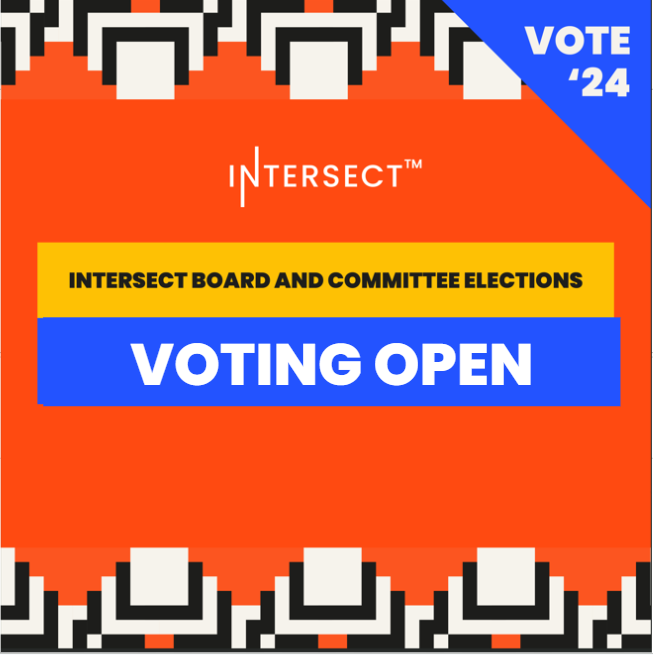Cardano survives blockchain-bubble burst
The formation of bubbles and their bursting is a common economic phenomenon. Excess capital of a speculative nature can flow into any sector. At some stage the bubble bursts, which has a cleansing effect. Internet fever, also known as...

The formation of bubbles and their bursting is a common economic phenomenon. Excess capital of a speculative nature can flow into any sector. At some stage the bubble bursts, which has a cleansing effect. Internet fever, also known as the dot-com bubble, refers to the period from 1996 to 2001, when Internet use increased massively. During this period, Internet companies boomed and then collapsed. The blockchain industry in many ways resembles the adoption of the internet in its early stages. New projects are being created daily. This is unsustainable in the long term and one can expect the blockchain bubble to burst. Every time the market capitalization of blockchain projects starts to fall for an extended period of time, people start to think it's the end of the industry. However, the bubble has not yet burst. Why is it smart to think that Cardano will survive the bursting of the blockchain bubble?
TLDR:
- People and VC funds are investing in blockchain projects without the necessary knowledge.
- The market capitalization curve and adoption rate always follow the technology curve. No other combination works in the long run.
- Each blockchain project can be described through a collection of certain properties. These properties can be compared with other projects.
How the blockchain industry resembles the dot-com bubble
In 1993, the release of the Mosaic web browser allowed access to the World Wide Web. Internet use has increased due to advances in ease of connection and computer education. Between 1990 and 1997, the percentage of households in the US owning computers increased from 15% to 35% as computer ownership ceased to be a luxury but a necessity. This marked a shift towards the digital age, an economy based on information technology. It also led to the creation of many new companies. The rush to invest in internet companies began.
Many investors did not hesitate to invest, without further consideration, in any "dot-com" company. Venture capital was very easy to raise. Investment banks further encouraged speculation as well as investment in technology. The combination of rapidly rising share prices and confidence in the future profits of dot-com companies created an environment in which investors often disregarded traditional parameters for investment and placed their trust primarily in future technological developments, resulting in a stock market bubble.
An unprecedented amount of personal investment was made during the "internet boom". Stories of people leaving their jobs to get fully involved in the day-to-day trading of stocks were common.
The typical dot-com was not trying to generate profit but to capture a market and customers for when the Internet was widely used as a mass medium. Money from investors was used to grow the company with the goal of selling the company on the stock market before the investment ran out. It is estimated that between 1998 and 2000, $2 billion a year was invested in Internet projects. The market value of Yahoo! stock in February 2000 was higher than the market value of the six largest publishing houses combined. At the time, analysts were beginning to warn that the stock was severely overvalued. Investors agreed that there would be some downside to the stock, but they kept investing.
During February and March of 2001, the stock prices of virtually all technology Web companies fell dramatically. Only a fraction of companies managed to survive until today. An example of a firm that is still operating today is Yahoo.com, whose stock has fallen from $200 (December 1999) to $12 (March 2001). In general, only those firms that have managed to generate at least some profit during the investment rush and have dramatically cut back on consumption have survived. Other big companies that survived the bursting of the dot-com bubble and still exist today include Amazon, Google, eBay, and several others.
If you replace the word "dot-com" with "blockchain" in the text above, you would have a very good idea of how the blockchain industry works today and what you can expect in the future. Many blockchain projects will die and only a few will survive.
Investors don't know exactly what parameters of blockchain networks to look at and can't make a good estimate of the potential. Some projects have made it into the top 10 for a few months and no one knows about them today. Venture capital funds are behaving very much as they did during the Internet fever.
Some might say that the blockchain industry is experiencing small bubble bursts on a regular basis and that there have been no big bursts yet. That would certainly be a fair point and it is possible that the adoption of blockchain networks will take a more leisurely course. On the other hand, it's hard to talk about a calmer course if project capitalizations regularly plummet 80% to subsequently make new all-time highs.
Why will Cardano survive?
Only those companies that were the most technologically advanced, had working services, and could generate profits survived the bursting of the dot-com bubble. Companies relying solely on marketing had no chance. In the blockchain industry, we can look at the statistics of blockchain network usage and the size of the community. Cardano has long been among the top 5 most used blockchain networks according to on-chain statistics.
Cardano has one of the biggest teams, if not the biggest. According to GitHub, the project is being developed most intensively. Cardano’s development is based on math and science. There are literally only a few similar projects in the blockchain industry. You can see significant differences when you compare the staking on Cardano with Ethereum or other projects. Cardano is one of the most decentralized networks. The Cardano network has never needed a reboot. There was no smart contract hack on Cardano unless you count the Nomad bridge hack, which was not a problem on the Cardano side.
In our opinion, more projects will survive the blockchain-bubble burst just as more companies survived the dot-com bubble. If you stake ADA on Cardano you have no reason to quit during the price drop. The protocol works regardless of the market value of ADA coins and will pay out regular rewards. As the DeFi and GameFi industries grow, the Cardano network will be used more and more. The ecosystem can grow during an ongoing bear market, even during the bubble bursting process, or after.
It is important to note the market capitalization curve and adoption rate always follow the technology curve. No other combination works in the long run. For example, increasing market capitalization is unlikely to affect the quality of technology, but it may affect adoption in the short term. A blockchain project is partly similar to an IT company in the sense that someone has to develop the technology, build new services and actively seek higher adoption. Blockchain is an inherently decentralized ecosystem, but that doesn't mean the team can afford to ignore the development of the technology. Adoption can be spontaneous, but there must always be a rational reason for it.
The graph below shows that if the quality of the technology increases, it is very likely that its adoption will also increase. As the network effect grows, so will Cardano's market capitalization.

If the technology is not developed in the long term, it could happen that adoption will start to decline. This would then lead to a decline in market capitalization, which could have been high in the very beginning. A high market capitalization may be the result of an inflated bubble. The burst means that the market has fairly valued a project that did not deserve a high market capitalization.
In the chart below you can see how a project whose market capitalization was only speculative can end up. Investors pumped up the price, but no one developed the project technologically. Adoption was never high. Investors just held the coins and waited to see what would happen next. Nobody was really using the network for anything. Nothing but a bursting of the bubble could be expected.

This is exactly what has happened to many dot-com companies.
The blockchain industry is highly competitive like any other industry. Each blockchain project can be described through a collection of certain properties. These properties can be compared with other projects. No blockchain project is likely to be the best at everything. Therefore, different projects will find different uses. The competition will push for improvements in technology, as each improvement may mean an increase in adoption. The blockchain industry matures due to a battle of technologies.
It's hard to guess what features will be the most important for users. At this stage of adoption, the blockchain community expects mainly good decentralization and security. These properties are somewhat abstract and difficult to measure. Cardano performs very well in both, but even if it is the best in the industry on paper, that doesn't necessarily mean it is enough for success.
It is likely that users will value features that are more directly related to the use of specific services. For transactional networks, fees and settlement time will be important. With a decentralized lending platform, users will expect good security, reliability, and better financial terms than traditional services.
People will mainly expect Bitcoin to grow in market capitalization which will be driven by institutional investors. Other features may be overlooked in the short term and technology may not be the most important determinant of success. All other projects can only succeed through a well-recognized technological dominance in a particular area. For example, in scalability.
People should not automatically expect that Bitcoin can succeed just because of the narrative. Technology cannot be cheated. Bitcoin will have existential problems in the long run related to a declining security budget and low network usage. If the problems are not solved, a new store of value will emerge. In a way, every blockchain project is a store of value if it maintains a rising market capitalization over the long term. Ethereum is also considered a store of value and many members of the Cardano community do not hold ADA coins because they want to lose value.
In the world of technology, there is no feature that cannot be copied or surpassed. Adoption may be more important than technology in this respect to some extent. An ideology or religion can be built around anything regardless of quality or competition. However, whether it is a sustainable model is not at all certain and personally, we would not bet on it.
A store of value is a property that is based on other sub-properties. For example, decentralization, security, the ability of coins to generate passive income, a sustainable economic model, the rate of adoption by institutions, and other properties.
Staking offers a feature that PoW networks do not have, namely the provision of passive reception. Bitcoin is sometimes accused of not having a cash flow. Cardano has a cash flow and for users, this is a very attractive feature. If you view this as technological innovation, you get the gist of this article. PoS is more energy efficient than PoW. That's why Cardano can regularly pay rewards to all ADA coin holders. For this to work in the long term, the network needs to start generating sufficient profit from transaction fees within a few decades. This is to be expected, as the team has a plan to make Cardano a financial operating system for the entire planet.
Conclusion
The mere fact that Cardano currently has the best staking may be enough for the project to survive the blockchain-bubble burst. False narratives may obscure reality in the short term, but users will recognize the benefits sooner or later. This will also apply to other features. The blockchain industry suffers from a lack of objective information. VC funds have enough funding to try to push their horses. Cardano is often deliberately overlooked, not included in on-chain statistics, or written about negatively for no apparent reason. This is noise. Cardano survives all of this because the community is well aware of the quality of the protocol. If a project has a large and engaged community, it will survive everything and succeed.
The key message of this article is that technology is king. Technology must be ready for adoption and offer obvious benefits in addition to the necessary reliability and security. Only then can the network effect grow, which will increase the social and financial significance of the network. Growth in market capitalization is only the logical outcome of success. However, the development of technology cannot be rushed. Cardano is being developed by the team as fast as it can, if you consider that "move fast, break things" is not a successful strategy. The technology leader undoubtedly has a great chance to succeed.
Delegate Your Voting Power to FEED DRep in Cardano Governance.
DRep ID: drep12ukt4ctzmtf6l5rj76cddgf3dvuy0lfz7uky08jfvgr9ugaapz4 | We are driven to register as a DRep by our deep dedication to the Cardano ecosystem and our aspiration to take an active role in its development, ensuring that its progress stays true to the principles of decentralization, security, and community empowerment.DELEGATE VOTING POWER!








